6 Vibe Coding Tools to Build Fast and Keep Code Quality Sharp
TL;DR
- Vibe coding is about staying in flow while still writing clean, maintainable code with the help of smart tools.
- Tools like Qodo, Cursor, and Cody focus on deep code understanding, helping you refactor, test, and architect with confidence.
- Qodo integrates perfectly with your IDE and helps build code with great code quality.
- Ghostwriter and Bolt.new shine in fast prototyping, AI workflows, and building without local setup.
- The right tools don’t just speed up development-they help enforce quality at scale, especially in large or legacy codebases.
Today, the line between productivity and chaos can get blurry, especially with AI-assisted development, auto-complete tools, and boilerplate generators. The shift toward “vibe coding” is real. It’s all over Twitter, GitHub issues, meme threads on Reddit. It’s evident that developers are writing more code than ever before, but that doesn’t always translate to better code.
As a senior developer, I’ve always seen code quality as a continuous alignment exercise: balancing speed, intent, and maintainability. Good tooling makes that alignment easier. Great tooling makes it feel effortless.
I don’t just want to throw shade at fast coding or experimental workflows. Instead, I want to explore how vibe coding tools can actually enhance your workflow without compromising quality, security, or sanity.
So the question isn’t whether vibe coding is happening, it is. The question is can we do it right? Can vibe meet quality? Can speed meet structure?
Let’s break it down, from practical examples to my personal setup, I’ll list down the top vibe coding tools 2025 to show how the right tooling stack can turn chaotic genius into sustainable engineering.
A Bit About Vibe Coding
Vibe coding is a style of software development where code almost writes itself, and your tools feel like an extension of your thoughts. Starting from where it was coined i.e, from Andrej Karpathy’s tweet on X, the term was featured all over The New York Times, the Guardian and several other online discussions.
I feel like the real meaning of vibe coding is getting lost. People are starting to use it for any coding done with AI, and that’s not what it’s really about. It makes things confusing and gives the wrong idea about what good, AI-assisted coding should look like.
To be honest, vibe coding isn’t just about using LLMs to write code. It’s more than that. It’s about getting into a state where the tools around you amplify your intent without getting in the way. In a real vibe coding setup, AI doesn’t just complete code-it understands the shape of your architecture, respects your style choices, and helps you make thoughtful tradeoffs. It’s less about “faster output” and more about smoother thinking.
Here’s a quick snapshot of how traditional workflows compare with modern vibe-oriented setups:
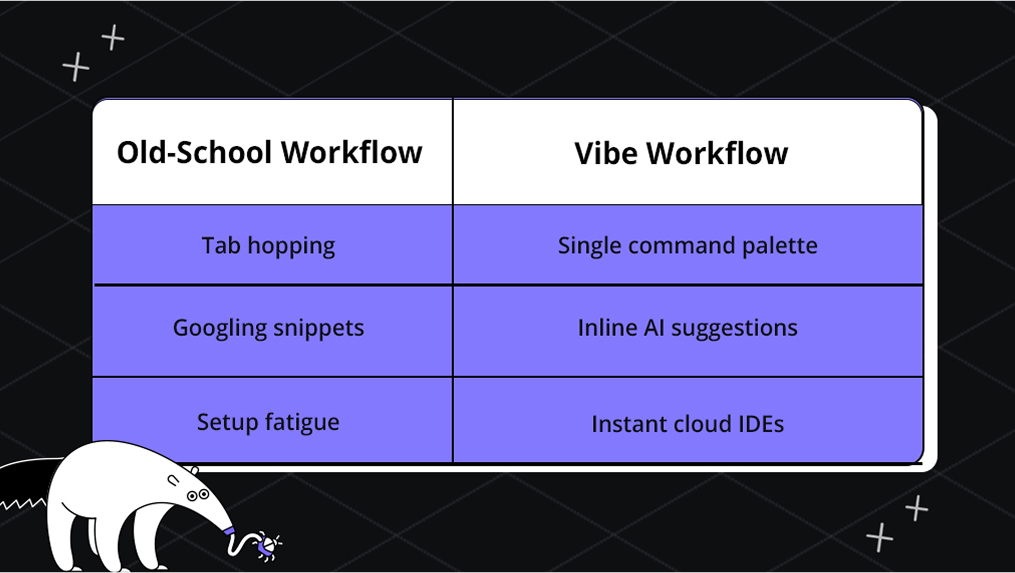
What Makes a Coding Tool ‘Vibe’?
As someone who’s tried everything from clunky plugin ecosystems to sleek AI-assisted setups,, I’ve come to realize that the best tools don’t just work, they make you create better systems.
Vibe coding tools take your prompts and then create high-quality codebase. You then move forward with refining it via other prompts till the final product requirement is met and this is an iterative process. To understand better, let’s look at how vibe coding works through a diagram here:
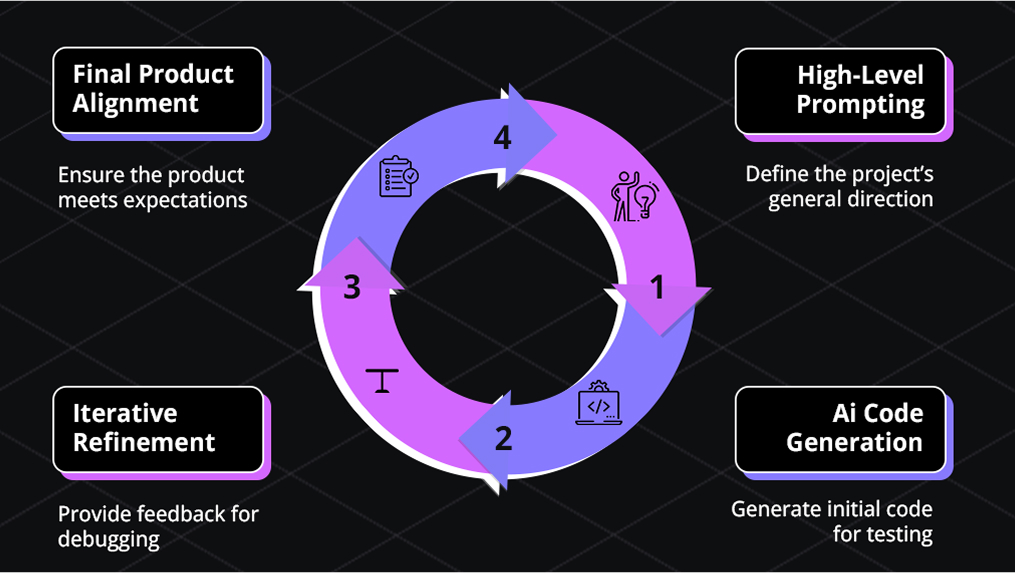
So, what exactly sets a vibe tool apart from the rest?
Fast Feedback Loops
Vibe tools prioritize real-time response. Whether it’s type checking, linting, or test execution, delays kill the flow. Personally, I stopped using tools that needed manual triggers. If I’m writing TypeScript and the type error shows up before I hit “save,” that’s vibe. Same goes for tools like Vitest or React Fast Refresh,if the feedback takes longer than a second, it’s too slow.
Minimal Context-Switching
The fewer times I need to leave my editor, the better my code quality gets. Vibe tools consolidate workflows with Git commands, issue tracking, documentation lookup, testing, all within the same interface. I’ve got my VSCode command palette opening GitLens, toggling test runners, and even querying my local docs via a simple shortcut.
Intuitive Interactions
Everything should feel one-click away, without feeling bloated. Vibe tools follow the rule: the more you use them, the better they get. My command palette knows I’m about to run tests after saving, and my keybindings are customized to the point where I don’t even think, I just act.
Top 6 Vibe Coding Tools I’ve Tried and Tested
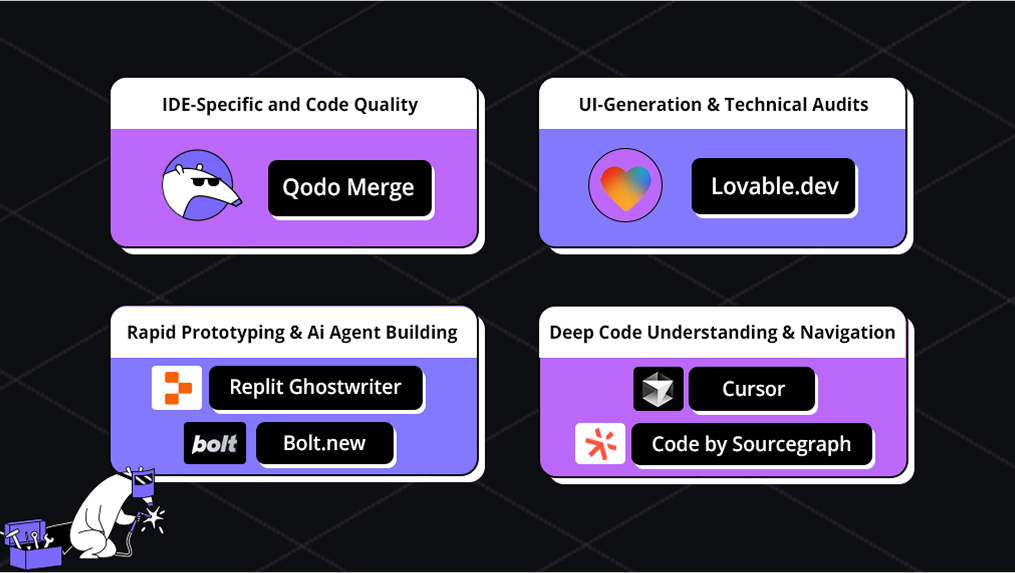
IDE- Specific and Code Quality
Deep Code Understanding & Navigation
Rapid Prototyping & AI Agent Building
UI Generation & Technical Audits
Bonus Tools To Improve Workflow
Code Exploration & Visualization Tools
- Codesee
- Swimm
- Visualize.js
Micro-Tools That Shape the Flow
- Mintlify
- Warp terminal
Ambient Feedback & Typing Experience
- Zed
- Lapce
Top 6 Vibe Coding Tools
Now that we have understood what tools come under the category of vibe coding, we can head to the top vibe coding tools that you can use to remove friction, enforce clarity, and scale without compromising quality. Let’s cover what are the best tools for vibe coding one by one by category:
IDE- Specific and Code Quality
1. Qodo Merge
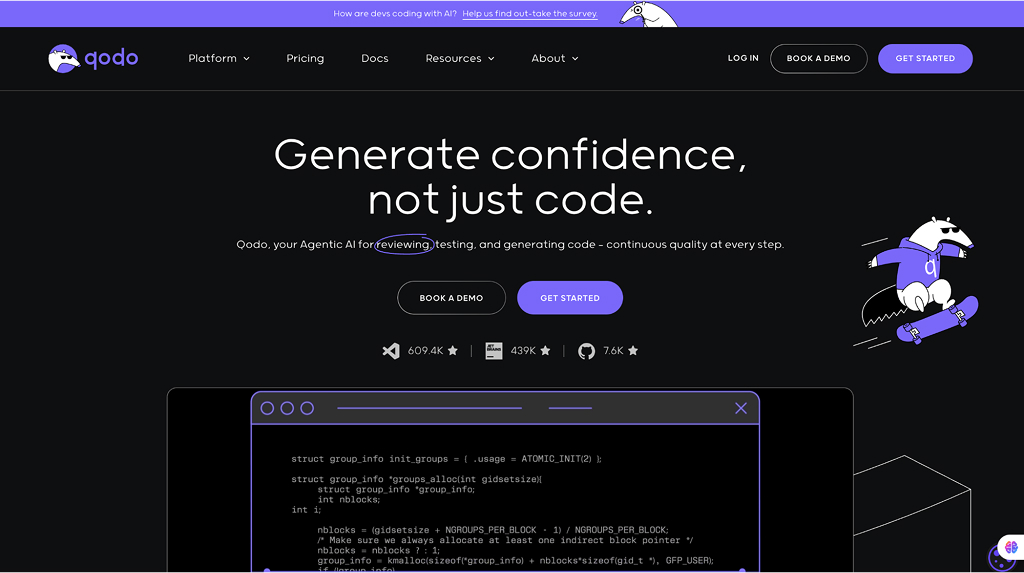
Qodo Merge is the best AI tool for ensuring code quality while you vibe code. It’s built around code integrity, not just speed or convenience. Unlike tools that focus on productivity metrics alone, Qodo Merge puts software quality at the center of the development lifecycle.
That means everything it generates, code reviews, or tests is focused on maintaining high software quality, consistently, and across the dev lifecycle.
Built Around Code Integrity
Qodo Merge helps developers with:
- Relevant, curated context: One thing I like about Qodo Merge is that it looks beyond the diff and understands sibling modules, historical patterns, and service boundaries.
- Standardized best practices: Enforces architectural guardrails, not just style rules.
- Ongoing analysis: Reviews don’t end at merge. Qodo Merge continues evaluating quality across the codebase with each new contribution.
Who should use Qodo Merge:
- Tech leads enforcing quality across fast-moving teams.
- Senior engineers working in multi-repo or service-oriented architectures.
- Anyone building systems where correctness, maintainability, and test coverage matter more than just moving tickets.
Advanced Workflow Example:
When I was designing a multi-tenant RAG platform with LangChain and Weaviate, I used Qodo Merge to keep quality front and center. I didn’t just prompt it to “generate code.” I said:
Prompt: “Design a secure, scalable backend for a multitenant RAG app. Every tenant gets isolated embedding space. Include proper Pydantic validation, error handling, test coverage, and OpenAPI docs.”
Output:
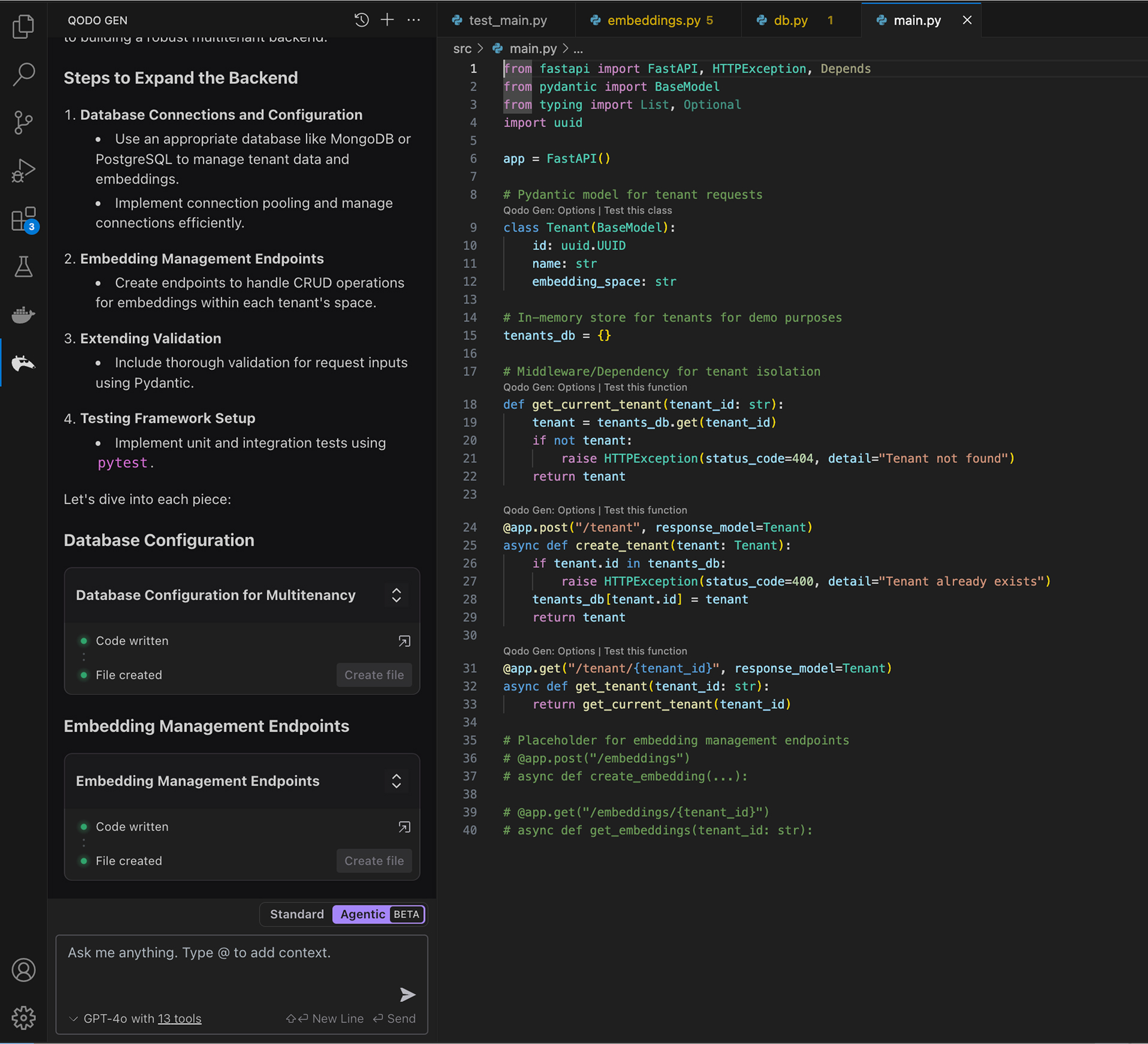
Here, Qodo Merge has perfectly:
- Planned and outlined a backend architecture for a multitenant RAG (Retrieval-Augmented Generation) application.
- Created a Python file using FastAPI to handle basic tenant operations, leveraging Pydantic for validation.
- Suggested an expansion of the code to include database connections (for tenant-specific data) using a sample MongoDB setup.
Qodo Merge doesn’t just write code, it helps you build real systems that hold up in production. And it sticks with you through the whole workflow: code, tests, reviews, and improvements over time.
Cons
- Advanced features may require a learning curve for teams
Pricing
Qodo Merge is free for individuals and open-source contributors. Team plan available for $15/user/month, offering advanced code review tools and integrations, ideal for teams managing frequent code changes.
Deep Code Understanding & Navigation
2. Cursor
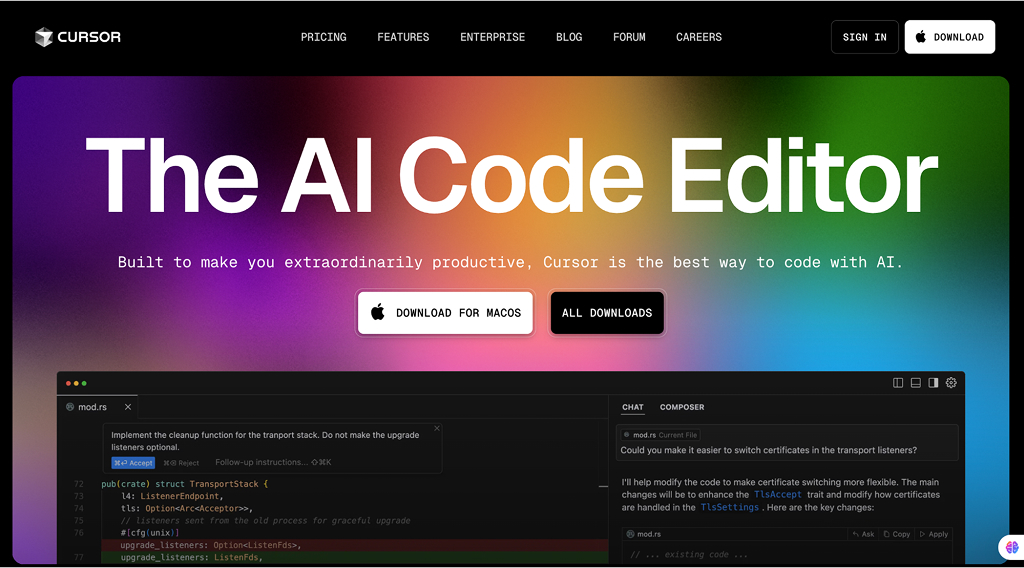
Cursor is an editor powered by GPT with full codebase context. Unlike basic autocomplete tools, it understands how your entire project fits together and can help with deeper changes across files and services.
Best suited for:
- Quickly onboarding into large or unfamiliar codebases.
- Making consistent refactors across many files.
- Debugging issues in dynamic languages like JavaScript or Python
Example from my workflow:
In a large React and Node.js monorepo (~200k LOC), I asked Cursor:
“Refactor to use res.status().json() consistently across the project.”
It provided diff-ready changes across 40+ files. Later, I needed to update a custom logger to use OpenTelemetry. Cursor helped apply structured spans across multiple services with correct context propagation. It saved hours of manual tracing.
Cons
- Struggles with deep context in large codebases.
- Best performance is tied to its native editor environment.
Pricing
Pro version available for $20/month, ideal for developers seeking advanced AI pair programming features within the custom editor.
3. Cody (by Sourcegraph)
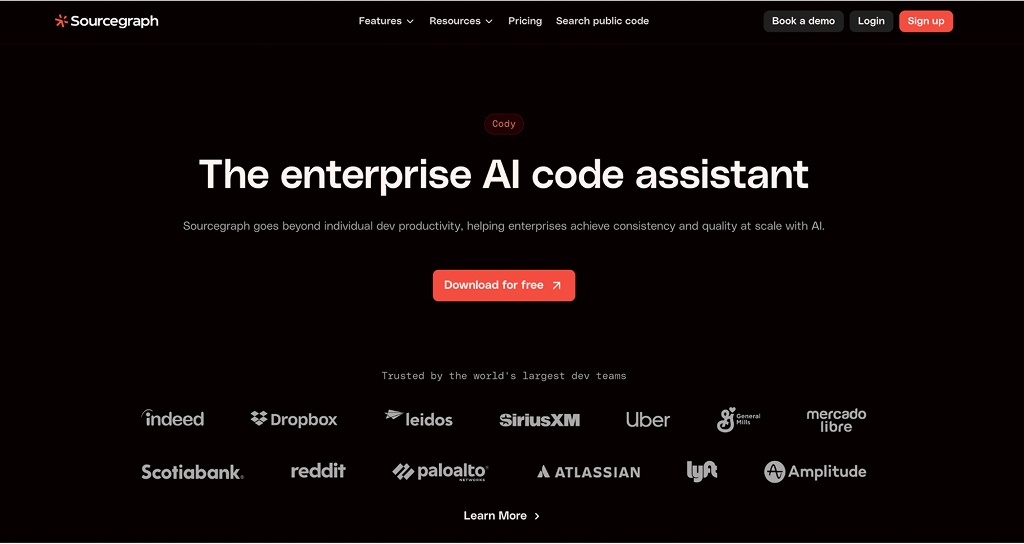
Cody combines LLMs with Sourcegraph’s code navigation capabilities. It understands your code’s structure and dependencies, not just the syntax, which makes it useful for large refractors or analysis.
For devs managing huge codebases, Cody is like having a supercharged code navigation tool with AI-enhanced search and explanation capabilities. Ever need to know, “Where’s the caching logic?” or “How does the payment service work?” Cody can find it and explain it, saving countless hours of manual digging.
Best suited for:
- Auditing large services for dependencies or risks.
- Refactoring shared libraries and business logic.
- Performing impact analysis before major changes.
Example use case:
In a large Go monolith repo (~500k LOC), I asked Cody:
“Where is the caching logic in this repo?”
Output:
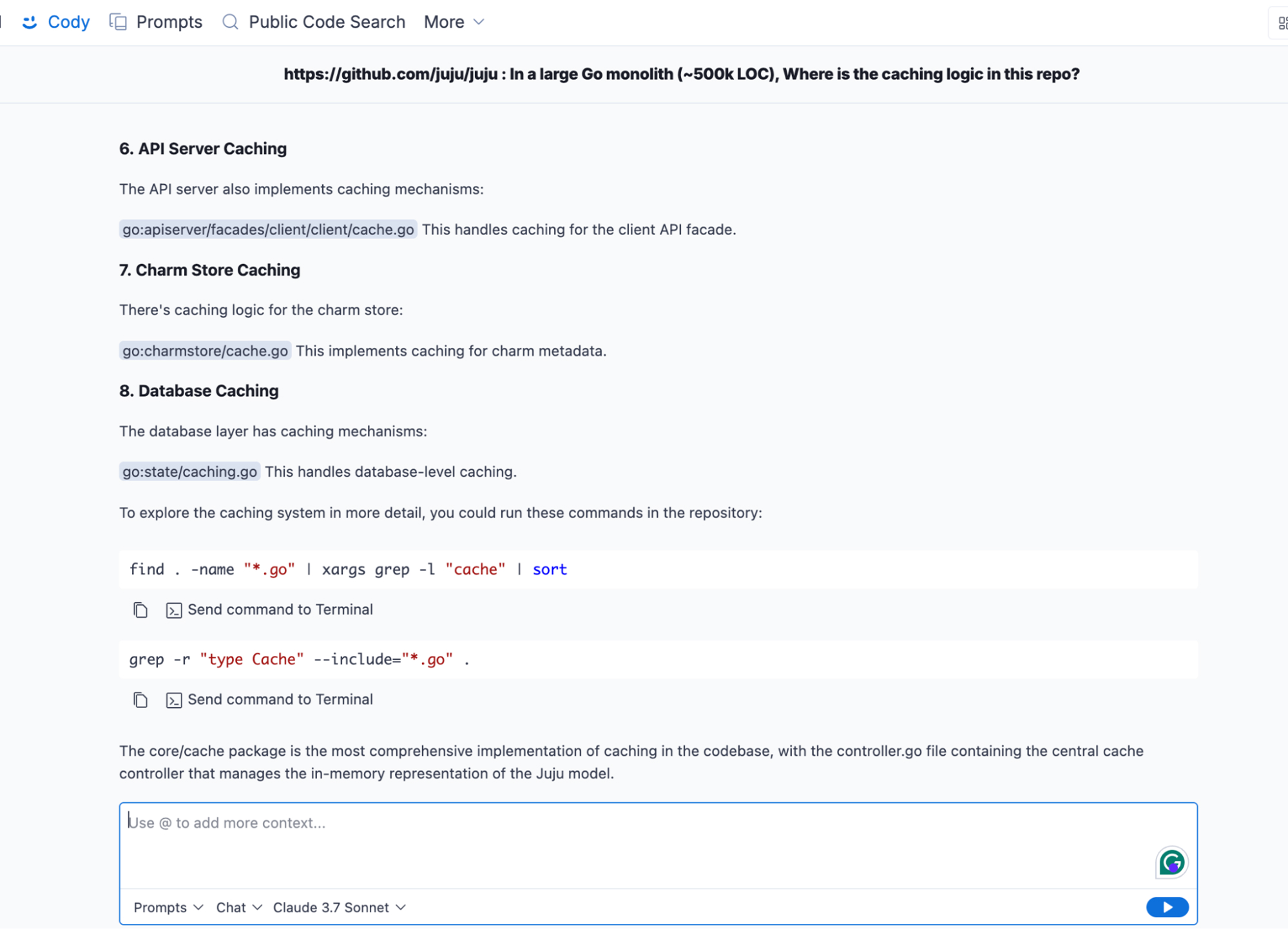
Cody provided:
- A full list of call sites.
- Impacted downstream modules.
- Suggestions to refactor using queues and retries.
This saved significant time compared to doing it manually with grep and code tracing.
Cons
- Requires Sourcegraph indexing for optimal performance.
- Setup can be resource-intensive for large organizations.
Pricing
Pro version available for $9/month, ideal for small teams needing full access to Cody’s code intelligence and chat features.
Rapid Prototyping & AI Agent Building
4. Replit Ghostwriter
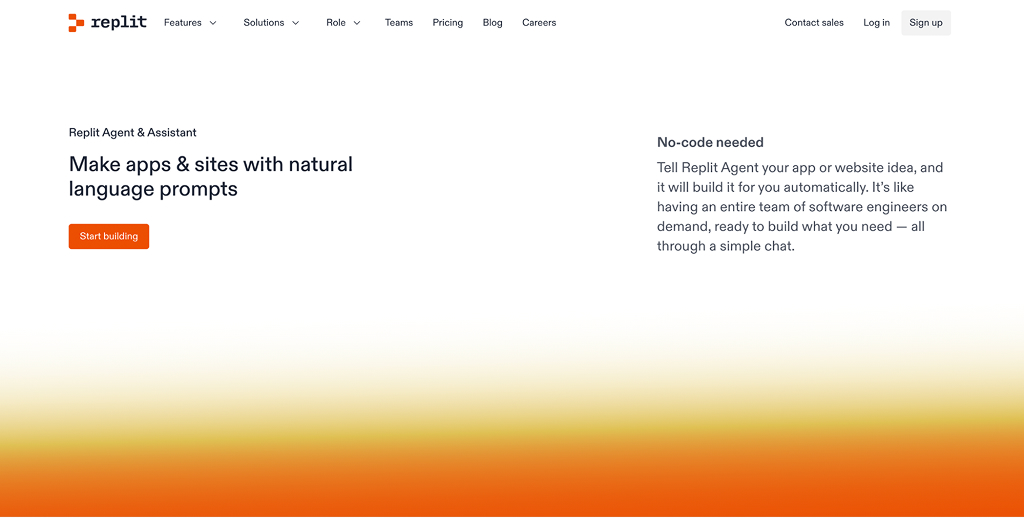
Replit Ghostwriter is designed for building and testing systems entirely in the browser. It’s a good choice when you need to move quickly and don’t want to spend time on environment setup or DevOps.
Best suited for:
- Rapid backend or API prototyping.
- Building microservices or AI agents in minutes.
- Developers working in constrained environments (e.g., no local dev setup).
How I used it:
I needed a small Flask-based task queue that:
- Accepts tasks via a webhook,
- Processes them with GPT-4,
- Stores results in Supabase,
- Uses Redis for task handling.
Output:
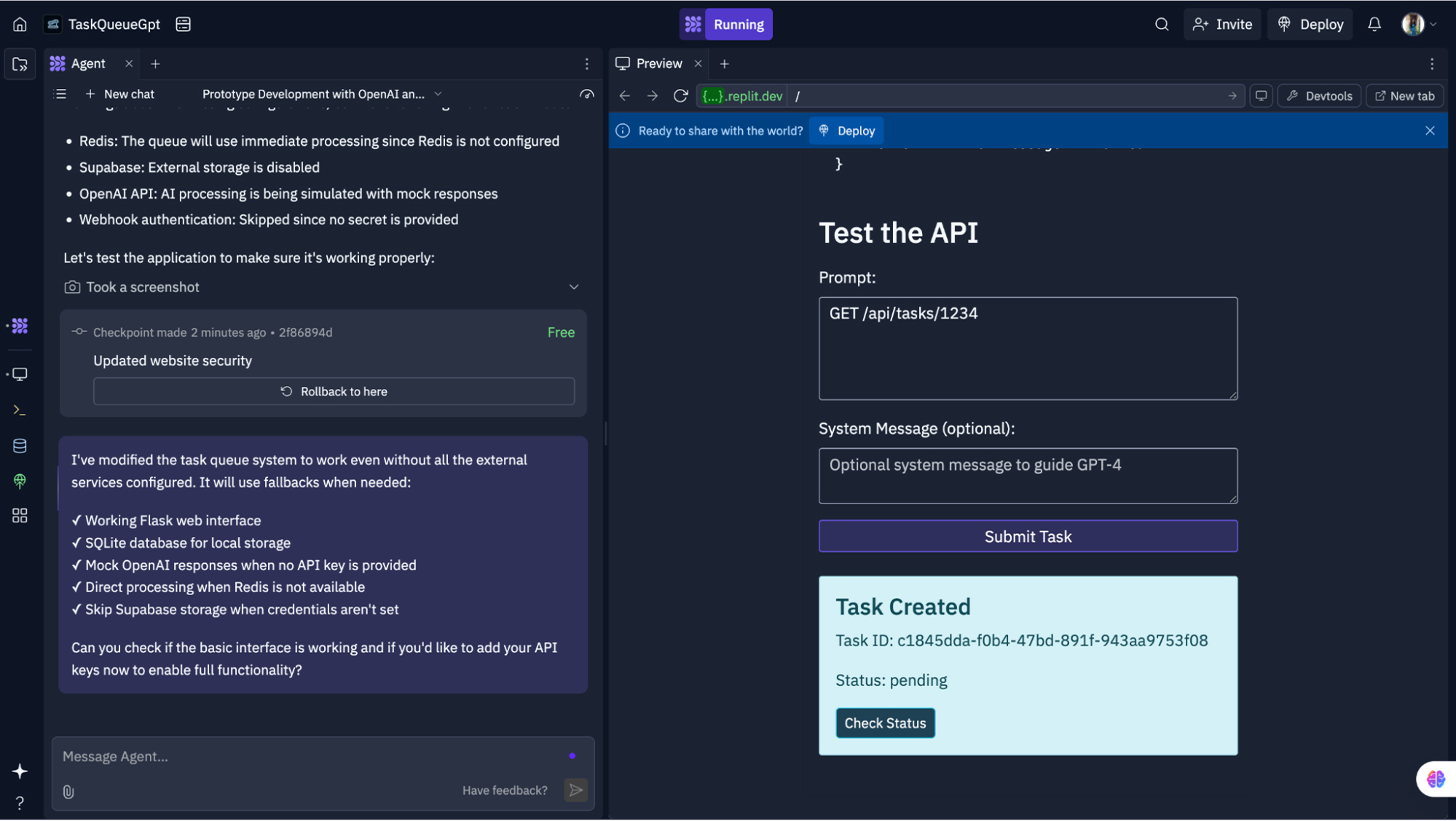
Ghostwriter generated the full project with Docker support, Redis pub/sub wiring, Supabase integration, and retry logic for failed webhook calls. I deployed it directly using Replit’s cloud runtime, with no local setup required.
Cons
- Lacks the power and flexibility of full desktop IDEs.
- Not ideal for enterprise-scale or backend-heavy projects.
Pricing
Pro access available via Replit’s Core plan at $20/month, which includes Ghostwriter and enhanced compute capabilities.
5. Bolt.new
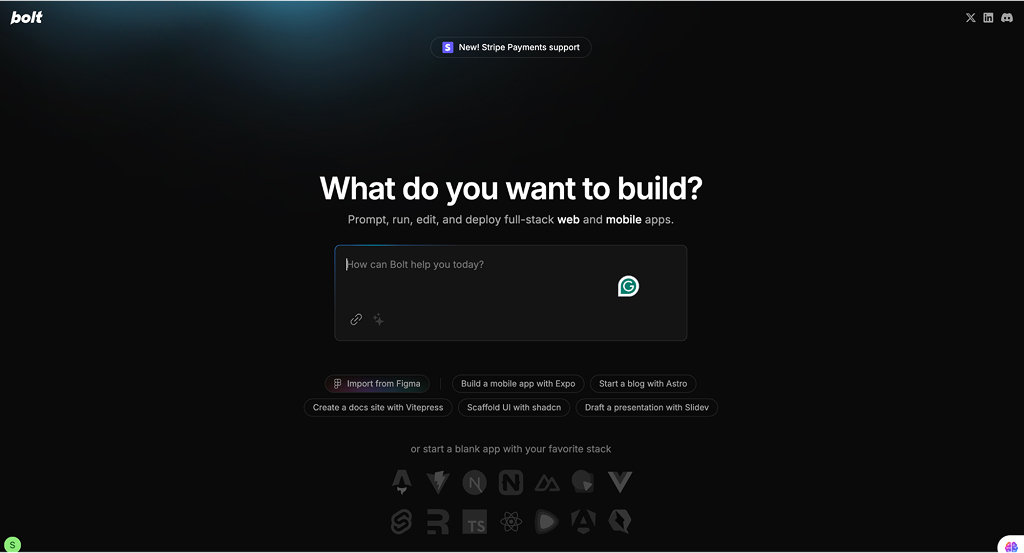
Bolt.new provides an interactive interface to develop and test AI workflows using real code and real-time outputs. It’s especially helpful for building RAG systems, prompt chains, and embedding pipelines.
Best suited for:
- Prototyping AI pipelines with real inputs and embeddings.
- Testing prompt performance with real-time metrics.
- Deploying AI backend logic quickly.
What I built:
I was working on a document ingestion pipeline for RAG using:
- 10 uploaded PDFs,
- RecursiveTextSplitter with 300-token chunks,
- OpenAI’s text-embedding-3-small,
- Qdrant as the vector store.
Output:
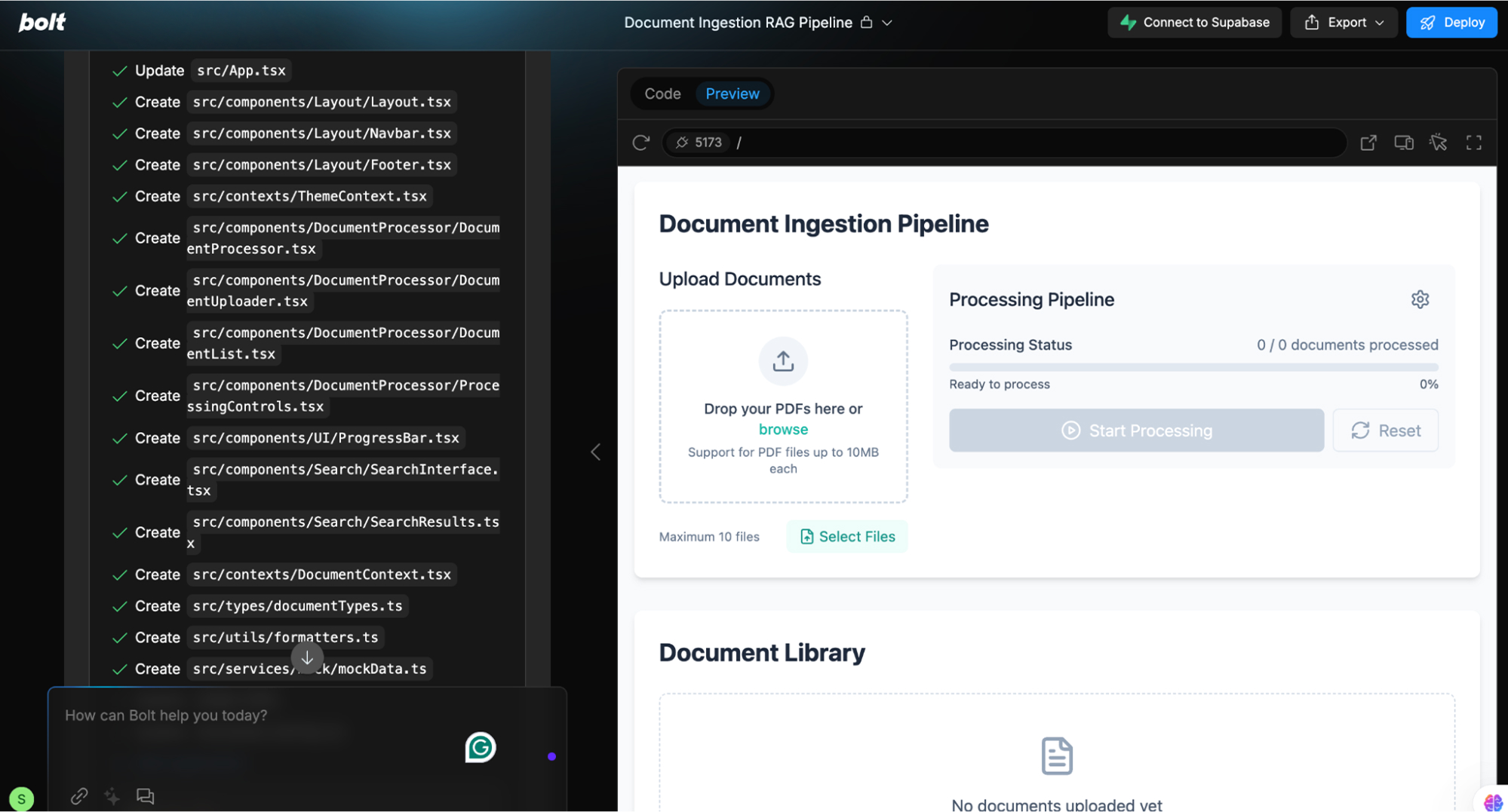
Bolt allowed me to:
- Inspect chunk distribution,
- View embedding similarity metrics,
- Test queries against real data.
Once it was ready, I exported the backend logic and deployed it via FastAPI. Everything was tested before deployment.
Cons
- Geared towards prototypes, not production-grade apps.
- Offers limited debugging and testing capabilities.
Pricing
Pro version available for $20/month, ideal for hobbyists and casual users engaging in light, exploratory coding projects.
UI Generation & Technical Audits
6. Lovable.dev
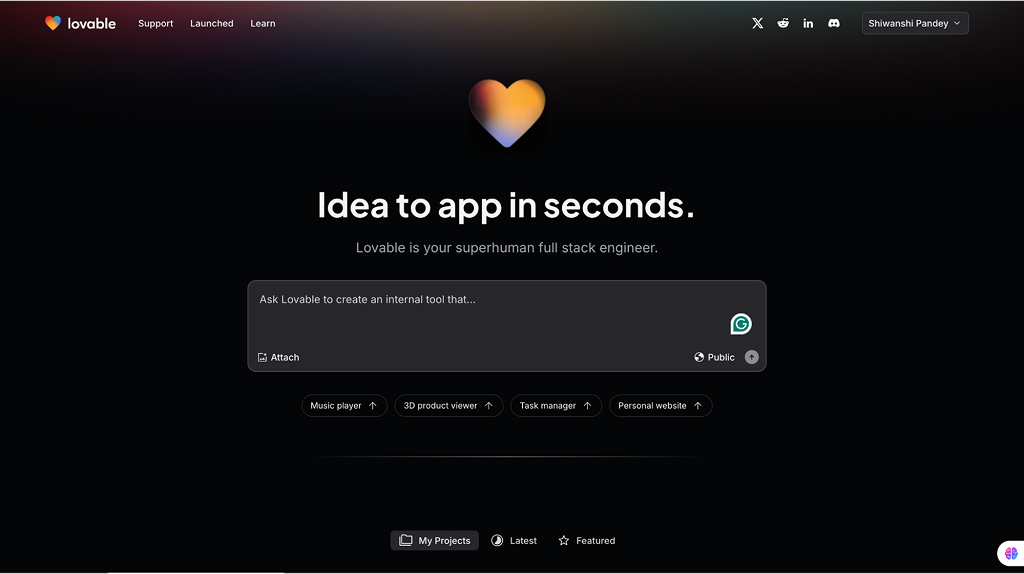
Lovable.dev is focused on reviewing and improving code, rather than just generating it. It provides suggestions based on architectural principles, performance, and best practices.
Best suited for:
- Refactoring older or poorly structured codebases.
- Performing technical audits before scaling.
- Generating documentation and diagrams for better clarity.
How I used it:
I wanted to check Lovable’s UI capabilities, so I used this prompt:
“Create a basic dashboard with a sidebar, top navbar, and a card-based layout for data metrics.”
Output:
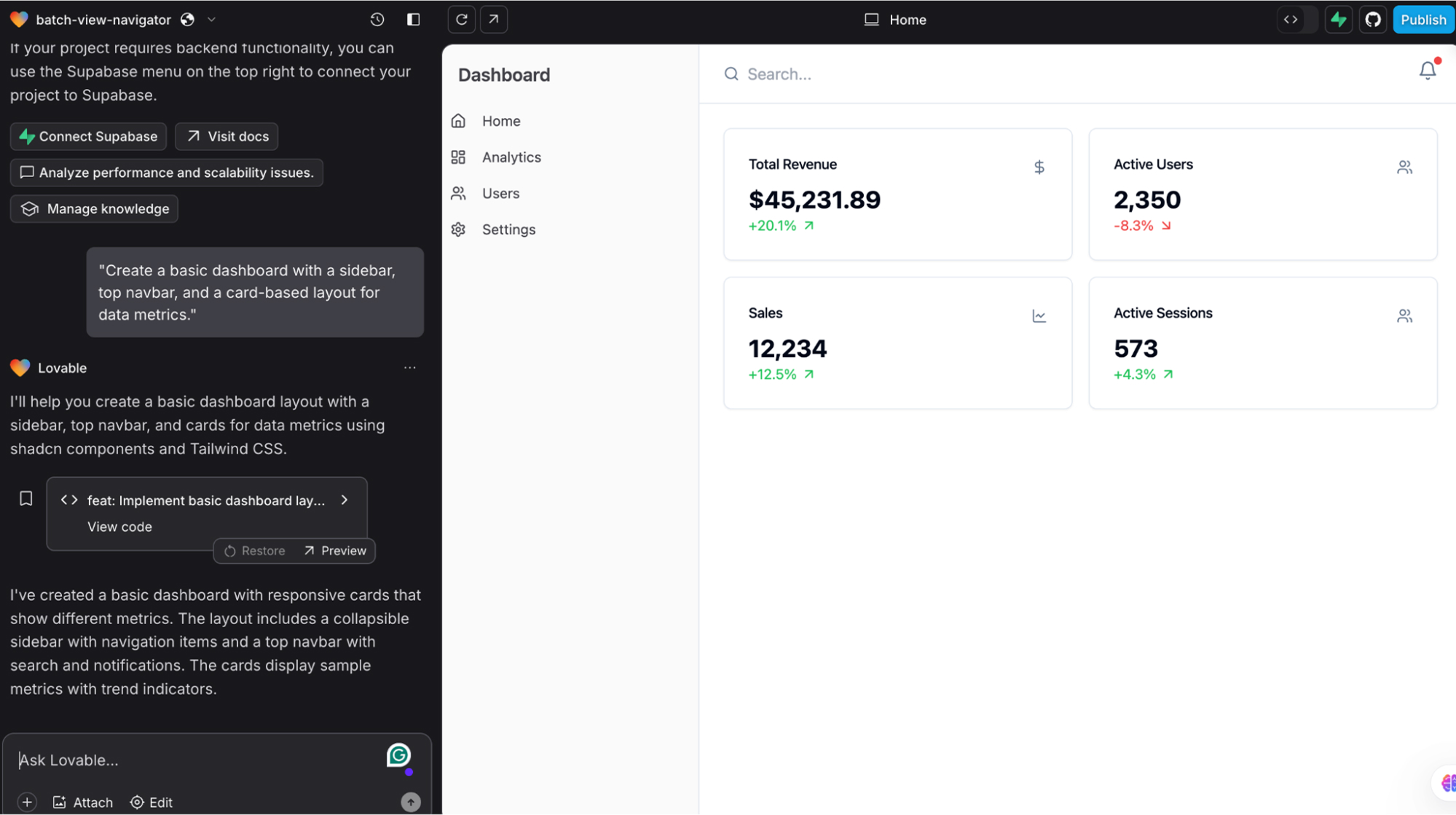
The real magic here is that Lovable.dev doesn’t just generate UI skeletons, it generates scalable code with thoughtful components, props, and layouts. If you’re pushing out MVPs or client-facing dashboards in tight deadlines, Lovable helps you focus on getting the logic right, while it handles the UI boilerplate.
Cons
- Lacks robust real-time collaboration features.
- Limited integrations with enterprise dev toolchains.
Pricing
Starter plan available for $20/month, perfect for hobbyists and occasional users. It includes unlimited private projects, custom domains, and extended monthly usage limits.
Bonus Tools That Deserve a Quick Nod
Not all coding magic comes from AI or automation. Some of the real vibe comes from how you move through code, how you feel while typing, and how smoothly you can connect with your team. These tools are about enhancing flow, pattern recognition, and shared context.
Code Exploration & Visualization Tools
I like to include these visualization tools as it helps me see the shape of my code and helps to compress complexity into visual clarity. Ideal for onboarding, auditing, and making fast architectural decisions.
- CodeSee: Creates auto-updated maps of your codebase. Great for grokking complex flows or onboarding new devs.
- Swimm: Syncs inline documentation with your code. Keeps tribal knowledge fresh and contextual.
- Visualize.js: Lightweight visualization for data flow and logic. Ideal for frontend-heavy teams or JS/TS stacks.
Micro-Tools That Shape the Flow
These tools don’t have a “large” impact but it helps me improve productivity in subtle ways:
- Mintlify: It auto-generates inline documentation from your code structure, comments, and naming, no need to context switch to a separate tool.
- Warp Terminal: It has command blocks break your terminal into readable, copyable chunks, easy to share and navigate
Ambient Feedback & Typing Experience
As a developer, I have always valued the look and feel of coding too. That means, the editors and terminals I use should be responsive,clear and help me with being productive.
- Zed: It is multiplayer-native editor with minimal UI distractions built for real-time team dev and helps with instant collaboration.
- Lapce: Lapce is a rust-based, blazingly fast open-source editor. It is designed for responsiveness and extensibility with native GUI and async architecture.
Match the Tool to Your Workflow (Not the Other Way Around)
We have seen the best vibe coding tools but it can be a bit confusing to choose among them. Choosing the right tools is all about matching them to your specific workflow. Every developer has a different approach to coding, and there’s no one-size-fits-all. Here’s a quick guide to help you find the best tool stack based on your profession and needs.
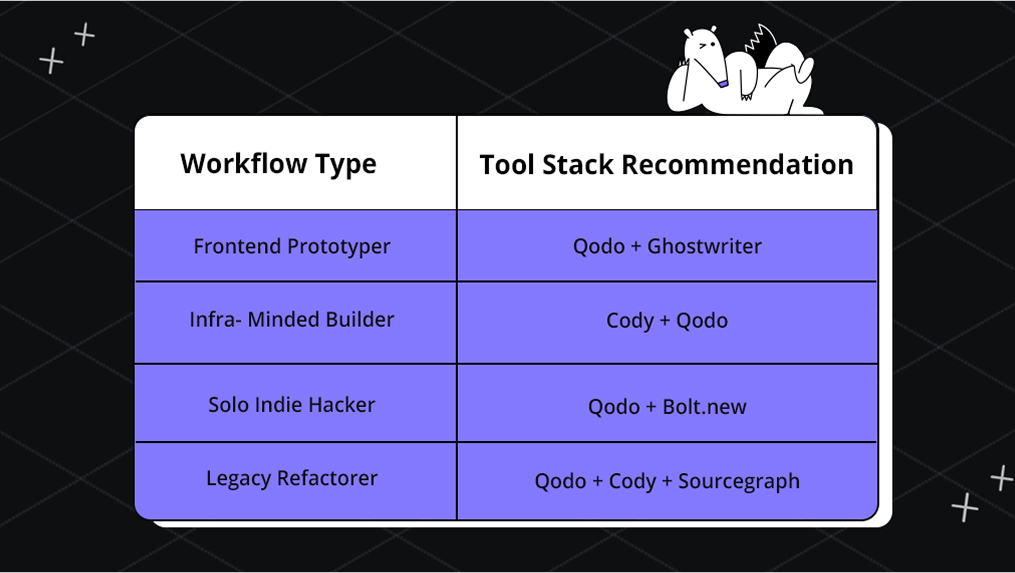
Conclusion
Vibe coding isn’t about cutting corners, it’s about building momentum. With the right tools for vibe coding, developers can stay in the flow, move fast, and still deliver high-quality, maintainable code.
In this post, we explored what makes a tool truly “vibe”: fast feedback, minimal context-switching, and intuitive interactions. From Qodo’s quality-first approach to Cursor’s deep codebase awareness, each tool showcased how AI and intelligent automation can support, not replace skilled engineering.
Whether you’re prototyping AI systems in Qodo, refactoring legacy code with Lovable, or shipping microservices through Replit and Zed, these tools don’t just accelerate your workflow-they elevate it.
Vibe coding isn’t a trend, it’s a shift. And when paired with the right tooling, it’s a practical way to balance speed with structure, creativity with correctness. I prefer to use these tools not to chase shortcuts, but to build better systems, faster and so can you.
FAQs
What is meant by vibe coding?
Vibe coding refers to using tools that feel like an extension of your thoughts, enabling a seamless flow with minimal context-switching and maximum creativity.
What are the best AI tools for coding?
Tools like Qodo, Cursor, Lovable are excellent choices for enhancing productivity, automating repetitive tasks, and improving code quality.
Can GitHub Copilot replace developers?
No, GitHub Copilot doesn’t replace developers-it complements their skills by suggesting code, generating tests, and identifying edge cases, leaving developers to focus on judgment and architecture.
Is Qodo only for non-coders?
No, Qodo is great for both designers-turned-developers and experienced coders. It helps with insane code quality and integrity, developing real, functional code rather than just mockups.
How secure is coding on Qodo?
Qodo takes security seriously with robust authentication and data protection measures. However, like any tool, it’s important to assess your own security needs before deploying sensitive projects.


